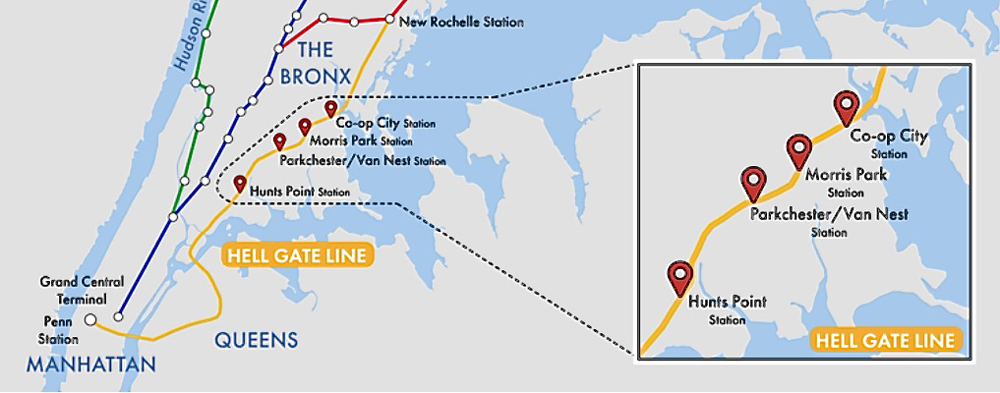
NEW YORK — A Metropolitan Transportation Authority plan to provide Metro-North service to Penn Station has received clearance from the Federal Transit Administration, setting the stage for construction of four new commuter rail stations as well as direct service from Connecticut.
The project will use the existing Amtrak line over Hell Gate Bridge between Penn Station and New Rochelle, N.Y., to connect to existing Metro-North lines north of New Rochelle. It will also see construction of four new stations in the Bronx, at Hunts Point, Parkchester/Van Nest, Morris Park, and Co-op City [see “MTA to resume process of bringing Metro-North service to Penn Station,” Trains News Wire, May 14, 2021].
The FTA’s Finding of No Significant Impact completes the environmental review process required found that while the Penn Station Access Project could have adverse effects in six areas, the project included plans to mitigate those impacts. In 11 areas, it would have no negative impact and offered potential improvements in five of those, including addressing air quality, greenhouse gases, and socioeconomic conditions. The documents related to the finding are available at the MTA’s project website.
“This project will be game-changing for Metro-North,” Catherine Rinaldi, Metro-North president, said in a press release. “In essentially one bold stroke it will allow the railroad to dramatically reduce travel times for a transit desert with a vast population of hundreds of thousands of people, and it will allow our busiest line to have a second destination in midtown Manhattan. We are already looking forward to opening day.”
The Rockland/Westchester Journal News reports the project will take four to five years to complete, but could reduce commute times by up to 75 minutes for some passengers. The MTA says the process to award a design-build contract for the project is already underway.






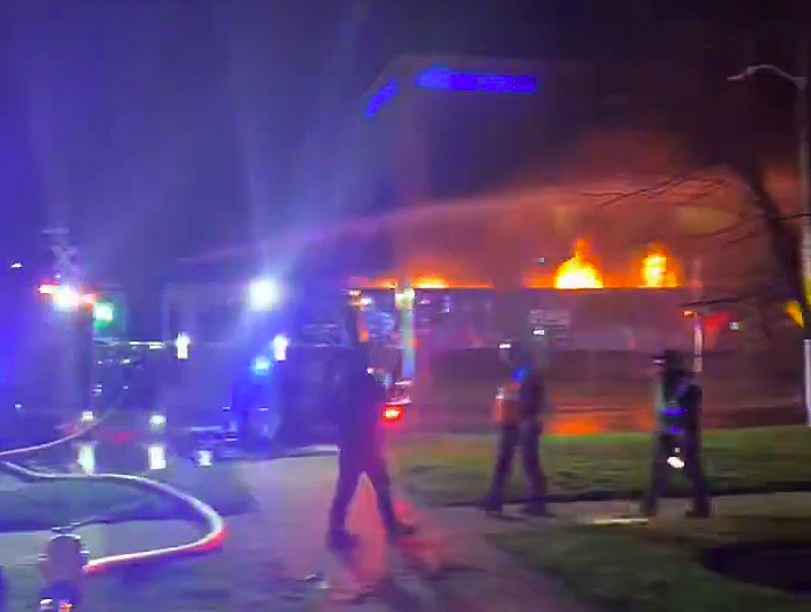
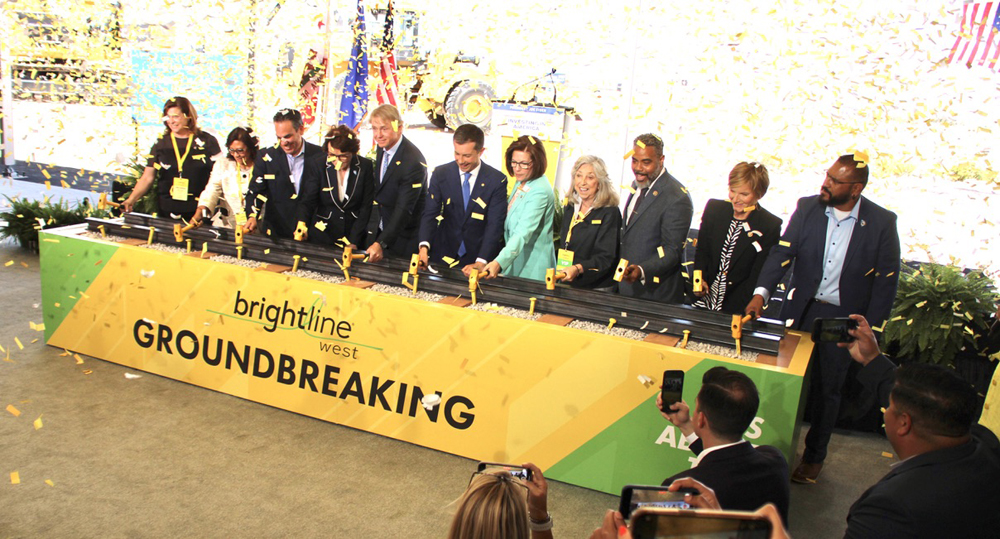
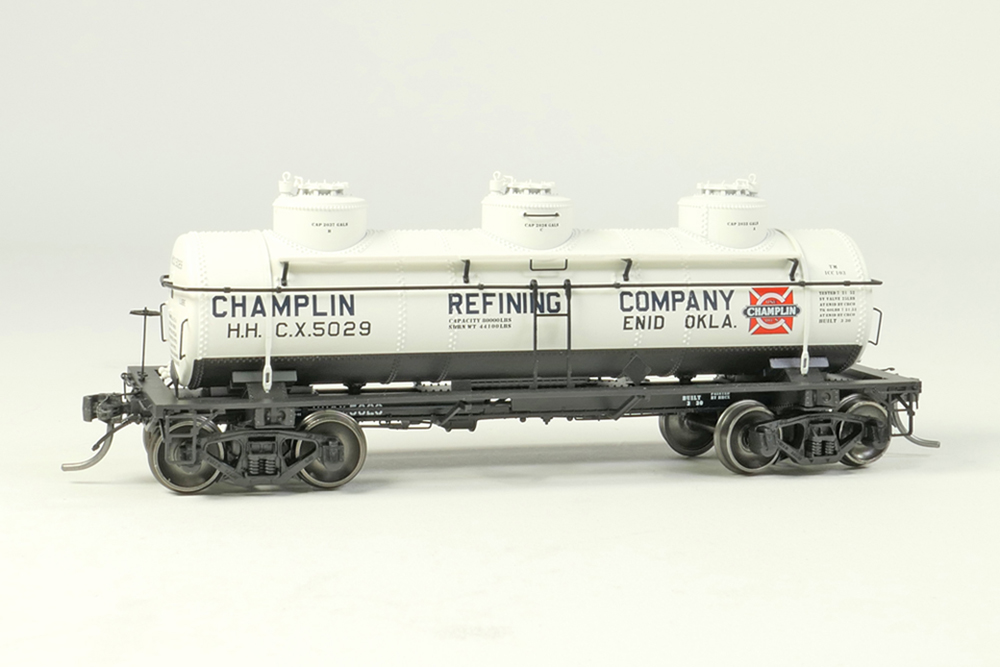
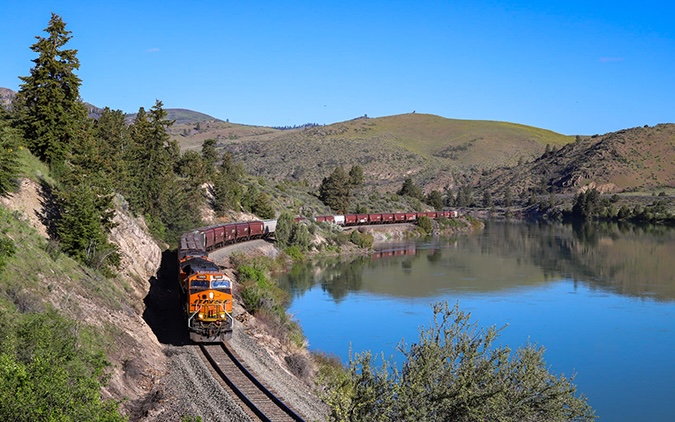




I’m confused. MNCR owns the track and the adjacent property and stations. WTH do they need Federal approval for to use their own property?
Bureaucracy Gone Wild?
Has DIRECT SERVICE Grand Central to Penn Station been looked at at all? Reason is from decades of travel to and from New York the 25 minutes spent wading through Brooklyn, Queens, the Hell Gate and The Bronx’s eastern haunts and waiting and waiting at New Rochelle–then knowing the New Haven did Grand Central to South Station in four hours flat BEHIND STEAM east of New Haven–that THAT direct through connection would cause the air shuttles to quit as Amtrak grabbed market share. Yes, they do like to spend money–why not spend it on something we can use? In the meantime, Hunt’s Point, Van Nest, Morris Park, not exactly Garden Spots of Suburbia. I could see “commuters” getting on at Hunt’s Point to rob passengers then getting off at Morris Park or some other interline station, or more likely just to do quick drug deals. Back in 1977 the New Haven line started stopping at stations in The Bronx–anyone know how that worked out?
Being the main intercity railroad station in New York City and the busiest transportation facility of any kind in the Western Hemisphere, the beloved veteran Penn Station is gaining more and more importance every day.
Dr. Güntürk Üstün
Actually the Spuyten Duyvil Line is electrified; third rail. That’s how Empire Service gets in and out of Penn.
The “Spuyten Duyvil Line” is not electrified. That’s not even the name of the line. It’s called the “West Side Line” and is only electrified for a very tiny distance in a new tunnel under the Javits Center to Penn Station.
The rest of the so-called “tunnel” is a well-ventilated surface building and is not electrified.
Of course it’s the West Side Line. Spuyten Duyvil works for me because it goes by my Alma Mater, Columbia University in the City of New York. As a college student I trespassed in that railroad tunnel, at the time virtually unused. I managed to survive four years in New York, and all those trips on the New Haven Railroad to/ from home in Massachusetts, Spuyten Duyvil.
Spuyten Duyvil Creek is one of the scenic highlights of Eastern America although it’s within the borough of Manhattan – both sides, including what by geography seems to be Bronx but by jurisdiction is Manhattan.
As a kid playing in the riverside park south of the George Washington Bridge, I remember NYC freights on the West Side Line, handled by battery-powered locomotives, as there was no third rail and no steam power permitted.
If I am recalling correctly, capacity increases are indeed contemplated including additional tracks in the Bronx, maybe doing something about Pellham River draw.
When the New Haven had commuter service to most of those locations, it connected to a ferry to Manhattan or to one of the subway or el lines. Don’t remember the details. Believe the right-of-way was six tracks wide (two freight and two passenger over Hellgate, two for NH locals), and the track space is still there, if not the tracks themselves.
Hell Gate was built for four tracks.
Baychester Station on the 5 is close to Coop City.
Is there an opportunity to try out a through ticketing scheme between Amtrak and Metro North or Long Island RR for example, Danbury Conn. to Washington DC on one ticket? Or LIRR to that same destination from some point on Long Island?
Is there rush hour capacity in East River Tunnels and/or West Side Storage?
How about running through Penn and up Hudson via west side/Spyten Duyvil?
As to your second paragraph: -The Spuyten Duyvil line isn’t electrified. Also I believe it connects only to a couple of the tracks in Penn Station.
As to the first paragraph in your post:- Capacity constraints in the older LIRR/ Amtrak East River tunnels should be relieved by the new 60th Street tunnel sending some LIRR trains into Grand Central Terminal.
How would this help trains destined to/from the New Haven Line?
Um, why does it take five years to bring service to Penn Station? The line is already there and is in use by AMTRAK. True, the stations will take time to build to add additional stops to the route, but surely as one station is finished another stop could be added. Besides, MetroNorth could award different vendors each of the station projects — or require a single vendor to bring enough labor to finish the four in the time it might otherwise spend on one.
Hopefully, the way I read it is “four to five years to complete” means all new stations built and in service, not “no service until all new stations are built.”
Um, capacity improvements (signals, switches etc.) may be required at some point or maybe many points along the route. It’s a fair question, James, but one that can only be answered by the Powers That Be, not from people like us around the country that don’t know the territory.
You have Co-Op City, sitting there in northeastern Bronx the last 55 years or so without any rail transit. I don’t know if New York’s anti-rail development czar of that era, the late Robert Moses, had anything to do with Co-Op City. He may just as well have, it’s so poorly thought through.
There’s a right and a wrong way to do things. In the north suburbs of Chicago, the massive Glen development in Glenview has a METRA stop. It’s way past time to get a rail stop for Co-Op City.
There are two issues, being that M8 trains cannot operate over 12.5kv 25hz wiring (the New Haven Line is 12.5kv 60hz and the NEC north of there is 25kv 60hz) and that part of the plan is to fully quadruple track the line. While In order to begin service, the latter isn’t 100% necessary if nonstop service is used, the former most definitely already needs to happen, as the existing voltage/frequency change is at the Hell Gate Bridge so the LIRR third rail would need to be extended or the power change would need to be moved to Harold Interlocking.
The newer MU’s have tap changers that can handle the voltage changes as Amtrak’s engines do.
Extending LIRR third rail does nothing for MetroNorth equipment as their third rail shoes are under-running while LIRR’s third rail is for trains with over-running shoes similar to the subway.